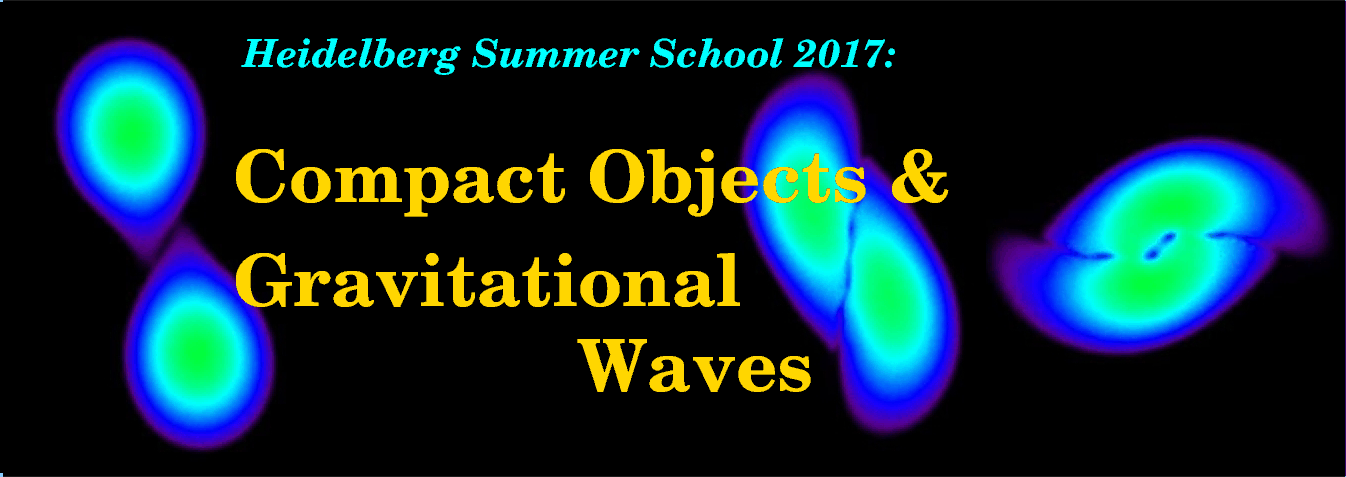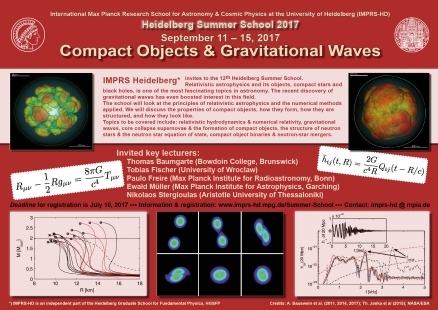

This webpage provides information for the 12th Heidelberg Summer School on the topic
The school took place September 11-15, 2017 in the Max Planck House in Heidelberg, Germany.
This school was the 12th in a series of Summer Schools with the previous topics:
-
2006: The Physics of the Interstellar Medium,
2007: The Milky Way Galaxy,,
2008: The Art & Craft of Astronomical Instrumentation,
2009: Statistical Inferences from Astrophysical Data,
2010: First Stars and Cosmic Reionization,
2011: Characterizing Exoplanets - from Formation to Atmospheres,
2012: Computational Astrophysics,
2013: High Energy Astrophysics,
2014: Frontiers of Stellar Structure & Evolution,
2015: Dynamics of the Interstellar Medium and Star Formation,
2016: Astrostatistics and Data Mining,
2017: Compact Objects & Gravitational Waves,
2018: Gaia Data & Science, ...
Max Planck Institute for Astronomy, Max Planck Institute for Nuclear Physics
Astronomisches Rechen-Institut, Institute for Theoretical Astrophysics, Landessternwarte Koenigstuhl, Heidelberg Institute for Theoretical Studies.
Scientific organizing committee: Andreas Bauswein & Friedrich Roepke (HITS), Rainer Spurzem (ARI).
Tobias Fischer (University of Wroclaw)
Paulo Freire (MPIfR, Bonn)
Ewald Müller (MPA, Garching)
Nikolaos Stergioulas (Aristotle University, Thessaloniki)
Relativistic astrophysics and their objects, compact stars and black holes, is one of the most fascinating topic in astronomy. The recent discovery of
gravitational waves has even boosted interest in this field.
The school has looked at the principles of relativistic astrophysics and nmerical methods applied, including properties of compact objects, how they
form, how they are structured, and how they look like.
Topics that were covered include:
- Relativistic hydrodynamics, numerical relativity
- Gravitational waves
- Core collapse supernovae, formation of compact objects
- Structure of neutron stars, neutron star equation of state
- Compact object binaries, neutron-star mergers
1. A series of structured lectures given by the main lecturers.
2. Presentations by other speakers (locals and invited) on the specific applications and results in the field of the school.
3. A social program to enable and encourage scientific interaction between students, lecturers and speakers.

